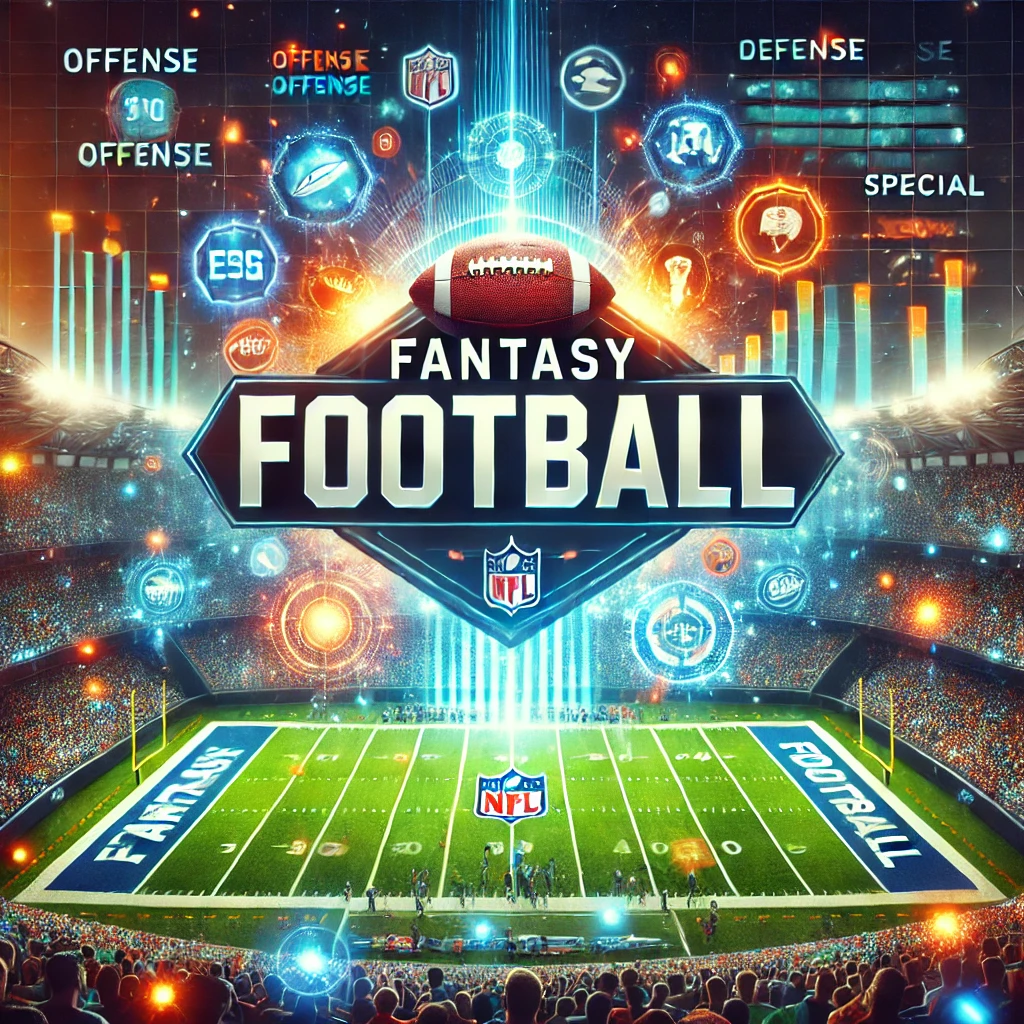Fantasy football is one of the most popular online games, blending the excitement of real-life football with strategic gameplay. Whether you’re a football enthusiast or a complete beginner, fantasy football allows you to build your dream team using real players, earning points based on their actual performances. But what exactly is fantasy football, and how can you get involved?
In this blog, we’ll break down the basics of fantasy football, explain how it works, and provide tips to help you get started. Let’s dive in!
What is Fantasy Football?
Fantasy football is an online game where participants create virtual teams composed of real football players from professional leagues (like the NFL or Premier League). Your team’s success depends on how well your selected players perform in real matches. Players earn points based on real-world statistics, such as goals, assists, tackles, or clean sheets.
Each week, fantasy football managers make strategic decisions like selecting players, transferring in new players, and choosing team captains to maximize points. It’s a mix of strategy, football knowledge, and luck!
Explore more: History of flag football
How Does Fantasy Football Work?
Here’s how fantasy football typically works:
- Create a Team: You select a squad of real-life players, usually with a set budget. Different players have varying price tags based on their form, position, and previous performances.
- Points System: Each player on your fantasy team earns points based on their real-world match performance. For instance, a forward may earn points for scoring goals, while a goalkeeper earns points for saving shots or keeping a clean sheet.
- Transfers and Substitutions: Throughout the season, you can adjust your team by transferring out underperforming players and bringing in new stars. Strategic transfers can make a huge difference in how your team performs.
- Compete in Leagues: Fantasy football is played within a league, often with friends, family, or online communities. The goal is to accumulate the highest points by the end of the season and be crowned the league champion.
Discover: The importance of teamwork in football
Why Is Fantasy Football So Popular?
Fantasy football has millions of dedicated players worldwide, and here’s why it’s so engaging:
- Interactive Viewing Experience: Fantasy football transforms the way people watch games. Fans are not just rooting for teams but specific players to perform well in every match.
- Social Interaction: Fantasy football fosters a sense of community. It’s common for players to join leagues with friends or coworkers, adding a competitive and social aspect to the experience.
- Strategic Gameplay: Fantasy football is much more than just picking your favorite players. You need to analyze stats, anticipate player form, and make tactical decisions. It’s this mix of football knowledge and strategy that makes the game exciting.
How to Get Started with Fantasy Football
Here’s a quick guide to starting your fantasy football journey:
- Choose a Platform: Some popular fantasy football platforms include Fantasy Premier League (FPL), ESPN Fantasy Football, and Yahoo Fantasy Sports. Each platform offers slightly different rules and scoring systems.
- Pick a Squad: Draft a team based on your budget. It’s important to strike a balance between high-performing stars and under-the-radar players who offer good value.
- Monitor Player Performances: Keep an eye on real-world performances and upcoming fixtures to plan your transfers and captain choices wisely.
- Have Fun!: The key to fantasy football is having fun. Whether you’re competing in a casual league with friends or aiming to win big prizes in public leagues, the game adds a new layer of excitement to the football season.
how many of each position for fantasy football
In fantasy football, the structure of your team is usually set based on real football positions, and you can adjust it depending on the strategy or league rules. Here’s a breakdown:
- Goalkeeper (1 player): You need one starting goalkeeper, and sometimes a substitute. Points are earned for clean sheets, saves, and penalty stops.
- Defenders (3–5 players): You typically select a backline of at least 3 defenders, but you can go up to 5. Defenders earn points for clean sheets, tackles, goals, and assists.
- Midfielders (3–5 players): Midfielders are essential, as they often score a mix of points from goals, assists, clean sheets, and other contributions. You need at least 3 in your lineup.
- Forwards (1–3 players): You can play with one to three forwards, who generally earn points from goals and assists. Forwards are usually your main goal-scorers.
Most fantasy football platforms give you a budget to select 15 players, consisting of:
- 2 goalkeepers
- 5 defenders
- 5 midfielders
- 3 forwards
You must field 11 players each game week, adjusting formations like 3-4-3, 4-4-2, or 5-3-2, depending on your players’ strengths.
Final Thought
Fantasy football is more than just a game—it’s a thrilling experience that deepens your connection to the sport. Whether you’re a football fanatic or a casual viewer, fantasy football offers an interactive way to engage with every match. Now that you know what fantasy football is, it’s time to jump in, build your dream team, and join the fun!

